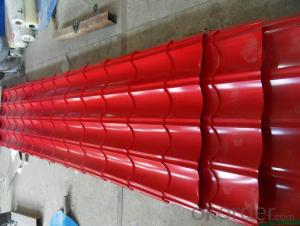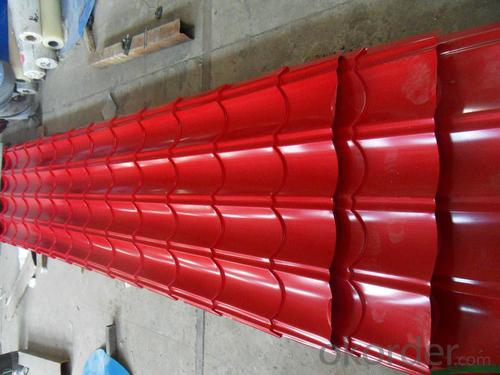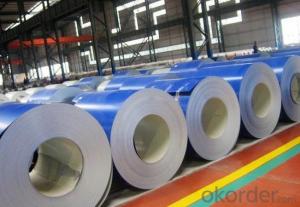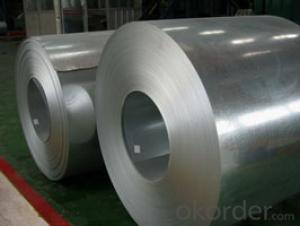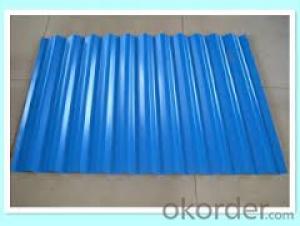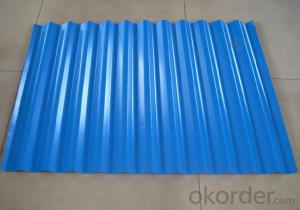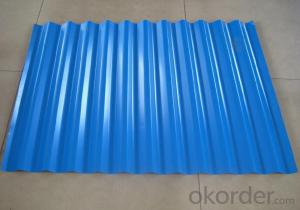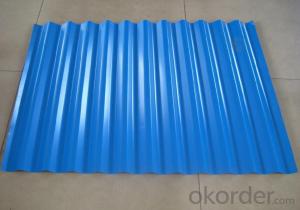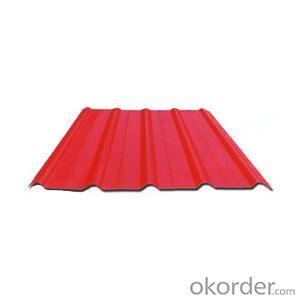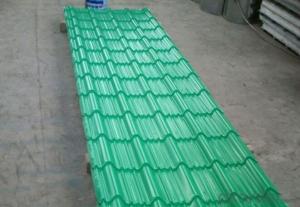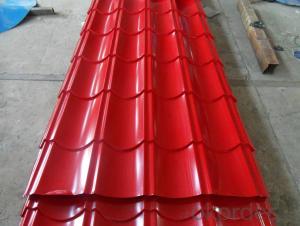4.Pre-Painted Galvanized/Aluzinc Steel Roof with Different Color and Thickness
- Loading Port:
- Shanghai
- Payment Terms:
- TT OR LC
- Min Order Qty:
- 50 m.t.
- Supply Capability:
- 10000 m.t./month
OKorder Service Pledge
OKorder Financial Service
You Might Also Like
1. Pre-Painted Galvanized/Aluzinc Steel Roof Description:
With GI as base material, after pretreatment (degrease and chemical treatment ) and liquid dope with several layers of color, then after firing and cooling, finally the plate steel is called pre-painted galvanized (aluzinc) steel. Pre-painted galvanized roof is good capable of decoration, molding, corrosion resistance. It generally displays superior workability, durability and weather resistance.
2.Main Features of the Pre-Painted Galvanized/Aluzinc Steel Roof:
• Excellent process capability
• Smooth and flat surface
• Workability, durability
• Excellent heat resistance performance
• High strength
• Good formability
• Good visual effect
3.Pre-Painted Galvanized/Aluzinc Steel Roof Images
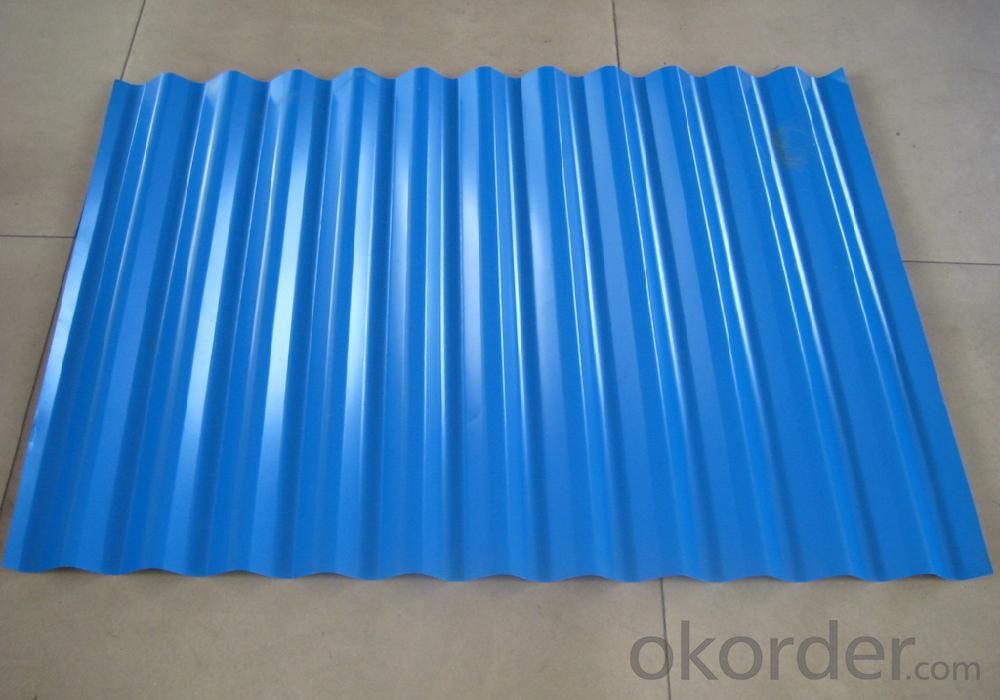
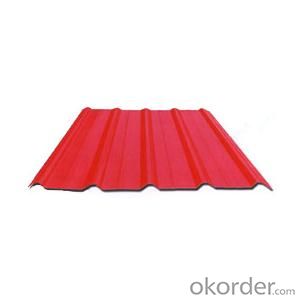
4.Pre-Painted Galvanized/Aluzinc Steel Roof Specification
Standard: AISI, ASTM, BS, DIN, GB, JIS
Grade: SGCC SGCH SGCD DX51D
Thickness: 0.13-3.0mm
Model Number: AISI, ASTM, BS, DIN, GB, JIS
Type: Steel Plate
Surface Treatment: Galvanized, with film, anti-finger
Application: Container Plate
Special Use: High-strength Steel Plate
Width: 30-1500mm
Length: any length
color: RAL color
5.FAQ of Pre-Painted Galvanized/Aluzinc Steel Roof
What’s the brand of the paint?
We use the best brand of all of the word—AKZO.
What’s the wet and heat resistance of the roof?
More than 1000 hours.
What’s the coating composition of Hot-Dip Galvanized Steel Coil?
The coating composition is 55% aluminium in weight ratio, 43.4% zinc, and 1.5% silicon, with excellent corrosion and heat resistance performance.
Which payment term we can do?
L/C at sight or T/T.
- Q: What are the common coil tests performed for quality control?
- The common coil tests performed for quality control include dimensional measurements, visual inspection for defects or damage, hardness testing, tensile strength testing, and surface finish evaluation.
- Q: I live in the Black Hills and I need to re-side my cottage. I like the look of vinyl. I've heard pros and cons about both steel and vinyl. Is steel really that easy to dent? It just doesn't look as 'clean' as vinyl. Also what 3 color combos do you like? My cottage has shutters.
- I have steel siding, and it is a pain in the butt. It's much harder to keep clean than vinyl. As for color combos, I love mine, sunny yellow with off white trim, and brick red for the doors. I added new brushed chrome doorknobs and brushed chrome rails around the porch, and it looks awesome. I am planning to have the steel siding replaced with vinyl though.
- Q: I have a carbon steel file that I want to bend in a letter C shape. So, what is the malliable temperature? If it's low, could it be done in a camp fire?
- It needs to be RED hot, the hotter the better. Yes you can use a camp fire if you put the file directly in the hottest part of the coals, but it'll take about 5-10 minutes to heat. Charcoal briquettes would probably work better as a heat source. You can use something like a blow dryer to intensify the coals, that might help. You'll also need a bench vice, and the biggest pair of pliers you can find, for leverage. Bending steel's not easy even when it's hot. You could also use a bit of steel pipe that'll fit over the end of the file. Stick the file in the vise when red-hot, slip the pipe over the free end, and use the pipe to bend it. OR, you could use the old-fashioned method of just holding it with pliers in one hand, and hitting it with a 5lb sledge hammer with the other. use something solid as an anvil, like a large steel pipe. you mighe be able to get away with using a small log, but you'll have to work twice as hard. Safety glasses are MANDITORY for this type of thing. Do not attempt without eye protection at all times. Ear plugs are also a very good idea.
- Q: What are the different types of steel coil edge finishes?
- There are several types of steel coil edge finishes, including mill edge, slit edge, and sheared edge. Mill edge refers to the natural, untreated edge of the steel coil as it comes from the mill. Slit edge is created when the coil is slit into narrower widths, resulting in a smooth, burr-free edge. Sheared edge is produced when the coil is cut using mechanical shearing, resulting in a slightly rougher edge compared to slit edge.
- Q: How do steel coils contribute to the energy efficiency of buildings?
- Steel coils contribute to the energy efficiency of buildings in various ways. Firstly, steel coils are commonly used in the construction of roofing systems. These coils are typically coated with reflective materials that help to reduce heat absorption from the sun. By reflecting sunlight away from the building, steel coils can significantly reduce the amount of heat that enters the building, thereby reducing the need for air conditioning and cooling systems. This, in turn, leads to lower energy consumption and reduced electricity bills. Additionally, steel coils are often used in the insulation of buildings. Steel coil insulation acts as a barrier against heat transfer, preventing heat from escaping in colder months and entering the building in warmer months. By effectively insulating the building, steel coils help maintain a consistent internal temperature, reducing the need for heating or cooling systems. This results in lower energy consumption and enhanced energy efficiency. Furthermore, steel coils are known for their durability and longevity. Their high strength and resistance to corrosion make them ideal for constructing energy-efficient buildings. By using steel coils in the construction process, buildings can be designed with thinner walls while maintaining structural integrity. Thinner walls allow for increased insulation space, enabling better energy efficiency and reducing the overall energy demand of the building. Moreover, steel coils are also recyclable, making them an environmentally friendly choice for building materials. The recycling process of steel coils requires significantly less energy compared to the production of new steel, thereby reducing carbon emissions. By using recycled steel coils, buildings can contribute to sustainable construction practices and help reduce their environmental impact. In conclusion, steel coils contribute to the energy efficiency of buildings through their reflective properties, insulation capabilities, durability, and recyclability. By utilizing steel coils in roofing and insulation systems, buildings can reduce heat absorption and heat transfer, leading to lower energy consumption and enhanced energy efficiency. Additionally, the use of steel coils supports sustainable construction practices, promoting a greener and more environmentally friendly approach to building design.
- Q: What are the main characteristics of steel coils?
- The main characteristics of steel coils include their high strength and durability, excellent corrosion resistance, and ability to be easily formed and shaped. They are typically made from carbon steel and come in various widths, thicknesses, and lengths. Steel coils are commonly used in a wide range of industries such as construction, automotive, and manufacturing for applications such as roofing, structural components, and electrical appliances.
- Q: How do steel coils impact the overall cost of production?
- Steel coils have a significant impact on the overall cost of production in a variety of industries. Firstly, the cost of steel coils themselves can be a significant expense. The price of steel is influenced by various factors such as supply and demand, raw material costs, and market fluctuations. Any increase in the cost of steel coils can directly impact the overall production cost, as it becomes a major component in the manufacturing process. Moreover, steel coils also affect the operational costs of production. They are typically used in various manufacturing processes, such as stamping, rolling, and forming, which require specialized machinery. The durability, quality, and size of the steel coils play a vital role in determining the efficiency and effectiveness of these processes. If the steel coils are of low quality or not suitable for the specific production requirements, it can lead to increased downtime, machinery maintenance, and rework, all of which contribute to higher production costs. In addition, transportation costs associated with steel coils can also impact the overall cost of production. Steel coils are usually heavy and bulky, necessitating special handling and transportation arrangements. The distance between the supplier and the production facility, as well as the mode of transportation, can significantly influence the logistics costs. Any increase in transportation expenses, such as fuel prices or shipping fees, can directly impact the overall cost of production. Lastly, the availability of steel coils can also impact production costs. In times of high demand or limited supply, the price of steel coils may increase, leading to higher production costs. Furthermore, if there is a shortage of steel coils due to factors like trade restrictions or disruptions in the supply chain, manufacturers may have to resort to alternative materials or sources, which could be more expensive or lower in quality. These factors can have a cascading effect on the overall cost of production. Overall, steel coils have a significant impact on the overall cost of production. Their cost, quality, transportation, and availability all influence the efficiency, effectiveness, and affordability of the manufacturing process. Therefore, manufacturers need to carefully consider and manage these factors to optimize their production costs and maintain competitiveness in their respective industries.
- Q: LIke a steel building conversion into a residental building??? Thanks.
- Right here. Steel Homes, Steel House, Steel Buildings, Steel Home Plans, ... Steel Homes, Steel House, Steel Buildings, Steel Home Plans, Steel Houses, ... Steel Homes and Buildings · Steel Office Buildings and Construction sites ... www.karmod.eu/steel-structures - 18k - Similar pages www.karmod.eu/steel-structures steel buildings metal buildings modular homes steel building ... ... log homes photographs, log homes construction, sales agents, log homes financing, ... Easy online pricing
- Q: What are the dimensions of steel coils used in the metal container industry?
- The dimensions of steel coils used in the metal container industry can vary depending on the specific application and requirements. However, common dimensions for steel coils used in this industry range from 0.5 to 3.5 millimeters in thickness and 600 to 2,000 millimeters in width. The length of the coils can vary based on the manufacturer and customer specifications.
- Q: What are the common welding defects in steel coils?
- There are several common welding defects that can occur in steel coils during the welding process. These defects include: 1. Porosity: This is characterized by small holes or voids in the weld metal, which are caused by gas entrapment during the welding process. It can weaken the weld and make it more susceptible to corrosion. 2. Lack of fusion or incomplete penetration: This defect occurs when there is inadequate fusion between the base metal and the weld metal, or when the weld metal does not fully penetrate the joint. It can result in a weak or brittle weld. 3. Cracks: Cracks can occur in the weld metal or in the heat-affected zone (HAZ) of the base metal. They can be caused by factors such as high stress levels, improper cooling, or inadequate preheating. Cracks can significantly reduce the strength and integrity of the weld. 4. Undercutting: Undercutting is a groove or depression that forms at the toe of the weld due to excessive melting of the base metal. It weakens the weld and can lead to stress concentration and potential failure. 5. Excessive spatter: Spatter refers to the small droplets of molten metal that are expelled from the welding arc and can land on the surface of the steel coil. Excessive spatter can result in a rough or uneven surface finish and may require additional cleaning or grinding. To minimize these welding defects in steel coils, it is important to ensure proper weld preparation, including cleaning and removing any contaminants from the surface of the steel. Additionally, using the correct welding parameters, such as appropriate heat input and travel speed, can help to minimize defects. Regular inspection and quality control measures can also help to identify and address any defects before they become more serious issues.
Send your message to us
4.Pre-Painted Galvanized/Aluzinc Steel Roof with Different Color and Thickness
- Loading Port:
- Shanghai
- Payment Terms:
- TT OR LC
- Min Order Qty:
- 50 m.t.
- Supply Capability:
- 10000 m.t./month
OKorder Service Pledge
OKorder Financial Service
Similar products
Hot products
Hot Searches
Related keywords
